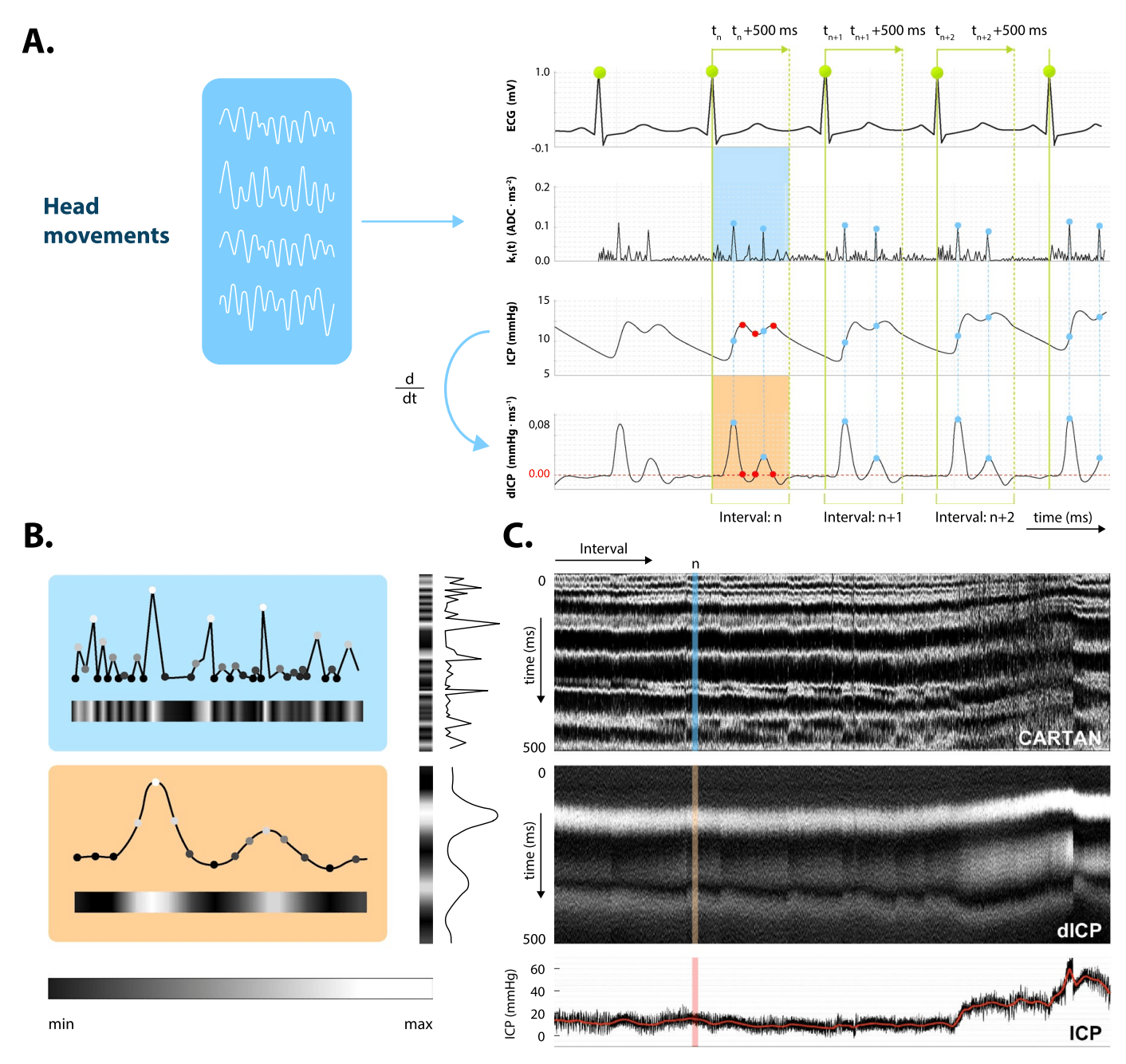From head micro-motions towards CSF dynamics and non-invasive intracranial pressure monitoring
Citation: Mládek A, Gerla V, Šeba P, Kolář V, Skalický P, Whitley H, Lhotská L, Beneš V, Bradáč O. From head micro-motions towards CSF dynamics and non-invasive intracranial pressure monitoring. Sci Rep. 2021 Jul 12;11(1):14349. doi: 10.1038/s41598-021-93740-5. PMID: 34253803; PMCID: PMC8275772.
Continuous monitoring of the intracranial pressure (ICP) is essential in neurocritical care. There are a variety of ICP monitoring systems currently available, with the intraventricular fluid filled catheter transducer currently representing the "gold standard". As the placement of catheters is associated with the attendant risk of infection, hematoma formation, and seizures, there is a need for a reliable, non-invasive alternative.
In the present study we suggest a unique theoretical framework based on differential geometry invariants of cranial micro-motions with the potential for continuous non-invasive ICP monitoring in conservative traumatic brain injury (TBI) treatment. As a proof of this concept, we have developed a pillow with embedded mechanical sensors and collected an extensive dataset (> 550 h on 24 TBI coma patients) of cranial micro-motions and the reference intraparenchymal ICP. From the multidimensional pulsatile curve we calculated the first Cartan curvature and constructed a "fingerprint" image (Cartan map) associated with the cerebrospinal fluid (CSF) dynamics. The Cartan map features maxima bands corresponding to a pressure wave reflection corresponding to a detectable skull tremble. We give evidence for a statistically significant and patient-independent correlation between skull micro-motions and ICP time derivative.
